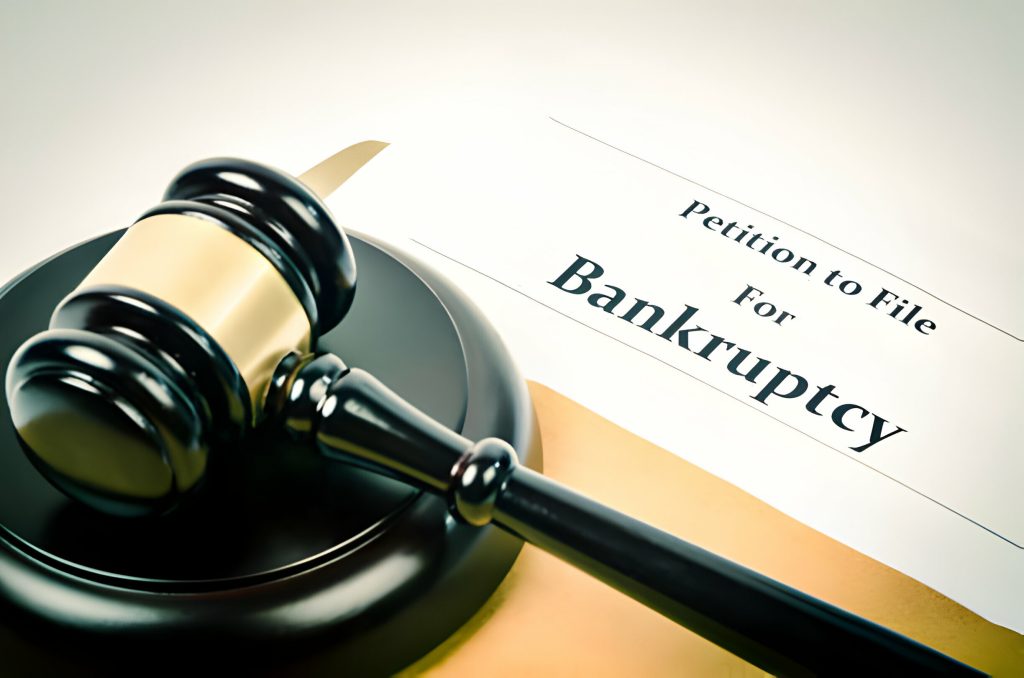Are you struggling to bounce back from bankruptcy? Don’t worry, you’re not alone. In this article, we’ll show you how you can recover quickly and get back on your feet. Assess your financial situation, create a budget, and build an emergency fund. Focus on rebuilding your credit and explore debt consolidation or settlement options. Seek professional advice and stay positive throughout the process. With determination and the right strategies, you can overcome bankruptcy and regain financial stability.
Assess Your Financial Situation
Assess your financial situation by taking a comprehensive look at your income, expenses, and debts. This is the first step in formulating a rebuilding strategy after bankruptcy. To begin, gather all your financial documents, such as bank statements, pay stubs, and bills. Calculate your monthly income by adding up all sources of money coming in. Next, evaluate your expenses by listing all your monthly bills, including rent or mortgage, utilities, groceries, transportation, and any other recurring expenses. Be thorough and include even the smallest expenses, as they can add up quickly.
Once you have a clear picture of your income and expenses, it’s time to examine your debts. Make a list of all your outstanding debts, including credit card balances, loans, and any other financial obligations. Take note of the interest rates and minimum monthly payments for each debt. This information will help you prioritize your debts and create a plan to pay them off.
After conducting your financial assessment, you can now develop a rebuilding strategy. Start by creating a budget that aligns with your income and expenses. Cut back on unnecessary spending and focus on paying off high-interest debts first. Consider consolidating your debts or negotiating with creditors to lower interest rates or create a repayment plan that fits your budget. Building an emergency fund should also be a priority to handle unexpected expenses.
Create a Budget and Stick to It
To recover from bankruptcy quickly, it is crucial to create a budget and stick to it. Start by tracking your expenses to get a clear picture of where your money is going. Identify areas where you can cut unnecessary spending and make adjustments to align your budget with your financial goals. Seeking professional financial advice can also provide valuable guidance and help you make informed decisions on managing your finances.
Track Your Expenses
- Start by creating a realistic budget that clearly outlines your expenses and income. This is crucial in order to track your expenses effectively and regain control of your finances. Here are some key steps to help you track your expenses and stick to your budget:
- Use expense tracking tools: There are numerous apps and online tools available that can help you monitor your spending and categorize your expenses. These tools can provide you with detailed reports and insights into your financial habits.
- Categorize your expenses: Divide your expenses into different categories such as housing, transportation, groceries, entertainment, and debt payments. This will give you a clear picture of where your money is going and help you identify areas where you can cut back.
- Set spending limits: Determine a specific amount that you are willing to spend in each category. This will help you prioritize your expenses and avoid overspending.
- Review and adjust: Regularly review your budget and track your expenses to ensure that you are staying on track. Make adjustments as necessary to align with your financial goals.
Cut Unnecessary Spending
To cut unnecessary spending and regain control of your finances after bankruptcy, create a budget and stick to it diligently. By reducing expenses and implementing effective budgeting techniques, you can quickly recover from bankruptcy and build a stronger financial foundation. Here are three practical steps to help you cut unnecessary spending:
| Step 1: Identify Your Expenses | Step 2: Prioritize Essential Spending | Step 3: Cut Back on Non-Essential Expenses |
|---|---|---|
| Review your bank statements and bills to identify where your money is going. | Make a list of essential expenses like housing, utilities, and groceries. | Evaluate your non-essential expenses and find areas where you can cut back. Consider reducing dining out, entertainment, or subscription services. |
Creating a budget and tracking your expenses will give you a clear understanding of where your money is going. It will empower you to make informed decisions and prioritize your spending. Remember, sticking to your budget is essential for long-term financial stability.
Seek Professional Financial Advice
Get professional financial advice to help you create and stick to a budget after bankruptcy. Financial counseling can play a crucial role in your post-bankruptcy recovery by providing you with expert guidance and support. Here are some key reasons why seeking professional financial advice is essential:
- Expertise: Financial counselors have extensive knowledge and experience in debt management and budgeting. They can assess your financial situation and tailor a budget that suits your needs.
- Objectivity: A professional advisor can provide an objective viewpoint, helping you make informed decisions about your finances without being clouded by emotions or stress.
- Accountability: By working with a financial counselor, you establish accountability. They can help monitor your progress, keep you motivated, and ensure you maintain discipline in adhering to your budget.
- Long-Term Planning: Financial advisors can assist you in creating a long-term financial plan, helping you set goals and navigate your way towards a stable and secure financial future.
With the guidance of a financial counselor, you can gain control over your finances, manage your debt effectively, and rebuild your financial stability after bankruptcy.
Build an Emergency Fund
Now that you have created a budget and are sticking to it, it’s time to focus on building an emergency fund. Saving for emergencies is crucial to your financial recovery after bankruptcy. This fund will serve as your financial safety net, providing you with the necessary cushion to handle unexpected expenses and avoid falling into debt again.
Saving for Emergencies
You should consistently set aside money to build an emergency fund, so that you are prepared for unexpected financial challenges after bankruptcy. Building an emergency fund is a crucial step in regaining financial stability and protecting yourself from future setbacks. Here are four key reasons why saving for emergencies is important:
- Financial Security: An emergency fund provides a safety net, ensuring that you have funds available to cover unexpected expenses without going into debt.
- Peace of Mind: Having an emergency fund gives you peace of mind, knowing that you are prepared for any unexpected financial situation that may arise.
- Avoiding Debt: By having a cushion of savings, you can avoid relying on credit cards or loans during emergencies, helping you to stay out of debt.
- Long-Term Financial Planning: Building an emergency fund is a crucial part of long-term financial planning, as it allows you to focus on other financial goals, such as saving for retirement or building wealth.
Financial Safety Net
Consistently setting aside money for emergencies is crucial in building a financial safety net that will protect you from unexpected setbacks after bankruptcy. By prioritizing financial stability and long-term planning, you can create a solid foundation for your future. One effective way to achieve this is by building an emergency fund. This fund acts as a safety net, providing you with a financial cushion in case of unforeseen expenses or emergencies.
To build your emergency fund, start by setting a realistic target amount that can cover three to six months of living expenses. Then, create a budget that includes regular contributions to your fund. Treat these contributions as essential expenses, just like paying your bills.
| Steps to Build an Emergency Fund |
| — | — | — |
| 1. Determine your target amount |
| 2. Set a monthly contribution goal |
| 3. Create a budget |
| 4. Automate your savings |
Recovering After Bankruptcy
To begin your recovery after bankruptcy, it is important to prioritize building an emergency fund. Rebuilding credit and establishing financial stability should be your top priorities. Here are some post bankruptcy recovery strategies to help you get back on track:
- Start by creating a budget: Evaluate your income and expenses to determine how much you can set aside each month for your emergency fund. Stick to this budget to avoid falling into the same financial pitfalls.
- Set realistic goals: Start small and gradually increase your savings. Aim to save at least three to six months’ worth of living expenses to provide a safety net in case of emergencies.
- Automate your savings: Set up automatic transfers from your paycheck to your emergency fund. This will help you stay consistent and avoid the temptation to spend the money.
- Seek professional advice: Consult with a financial advisor who specializes in post bankruptcy recovery. They can provide personalized guidance and help you make informed decisions.
Focus on Rebuilding Your Credit
Rebuilding your credit after bankruptcy requires a diligent and strategic approach. It may seem daunting at first, but with the right steps, you can gradually improve your credit score and regain financial stability. One crucial aspect of credit repair is understanding your credit report. This report provides detailed information about your credit history, including any bankruptcies or late payments. By reviewing your credit report regularly, you can identify any errors or discrepancies and take steps to correct them.
Another vital step in rebuilding credit is making timely payments. Paying your bills on time demonstrates responsible financial behavior and can positively impact your credit score. Consider setting up automatic payments or reminders to ensure you never miss a payment. Additionally, reducing your debt-to-income ratio can help boost your creditworthiness. Aim to pay off outstanding debts, starting with those that carry the highest interest rates.
To further expedite the credit repair process, consider obtaining a secured credit card. These cards require a cash deposit that serves as collateral. By using the card responsibly and making timely payments, you can gradually rebuild your credit.
Rebuilding your credit after bankruptcy may take time, but with patience, persistence, and a solid plan, you can regain financial stability and improve your creditworthiness. Remember, each step you take towards rebuilding your credit brings you closer to a brighter financial future.
| Strategies for Rebuilding Your Credit |
| :— | :— | :— |
| Understand Your Credit Report | Make Timely Payments | Reduce Debt-to-Income Ratio |
| Regularly review your credit report to identify any errors or discrepancies. | Pay your bills on time to demonstrate responsible financial behavior. | Aim to pay off outstanding debts, starting with high-interest ones. |
| Check for and correct any inaccuracies in your credit report. | Set up automatic payments or reminders to avoid missing payments. | Consider obtaining a secured credit card to rebuild your credit. |
| Monitor your credit report regularly to track your progress. | Prioritize debt repayment and avoid taking on new debts. | Use the secured credit card responsibly and make timely payments. |
Explore Debt Consolidation or Settlement Options
Consider exploring options for consolidating or settling your debts to expedite your recovery from bankruptcy. Debt consolidation and settlement can be effective strategies to manage your finances and regain control over your financial situation. Here are some practical steps you can take:
- Debt management: Start by creating a comprehensive list of all your debts, including the amount owed, interest rates, and payment due dates. This will give you a clear picture of your financial obligations. Next, consider contacting a reputable debt management agency that can help you negotiate lower interest rates or monthly payments with your creditors. They can also assist you in creating a personalized debt repayment plan.
- Negotiating settlements: If you have the means to make lump sum payments, consider negotiating settlements with your creditors. This involves contacting your creditors and offering a reduced sum to settle the debt in full. Be prepared to negotiate and provide documentation that supports your financial hardship. Ensure that any settlement agreement is in writing and clearly outlines the terms of the settlement.
- Seek professional advice: It’s crucial to consult with a financial advisor or bankruptcy attorney before pursuing debt consolidation or settlement options. They can provide valuable insights and guidance tailored to your specific situation.
- Monitor your progress: Once you have implemented a debt consolidation or settlement plan, regularly monitor your progress. Stay committed to making timely payments and track your debt reduction. Celebrate small victories along the way to stay motivated.
Seek Professional Financial Advice
If you want to effectively navigate your financial recovery after bankruptcy, it is essential to seek professional financial advice. Professional financial assistance can provide you with the guidance and expertise needed to develop a solid plan for rebuilding your financial health. They can help you understand the various bankruptcy recovery strategies available to you and tailor them to your specific circumstances.
A professional financial advisor can assess your current financial situation, analyze your debts and assets, and create a comprehensive plan to help you recover from bankruptcy. They can help you prioritize your financial goals, develop a budget, and establish a realistic timeline for achieving them. They can also provide you with valuable insights and advice on managing your finances, rebuilding your credit, and avoiding future financial pitfalls.
Seeking professional financial advice can save you time, money, and stress in the long run. They have the knowledge and experience to navigate the complex world of bankruptcy and provide you with the best possible solutions. They can also act as a mediator between you and your creditors, negotiating repayment plans or settlements on your behalf.
Stay Positive and Motivated Throughout the Process
To maintain your momentum and mindset during the bankruptcy recovery process, it is important to stay positive and motivated. While it may be challenging at times, adopting a positive mindset can help you navigate through the difficult journey ahead. Here are some practical tips to help you stay motivated and maintain a positive mindset:
- Surround yourself with a support system: Seek the support of family, friends, or a support group who can provide encouragement and help you stay focused on your goals.
- Celebrate small victories: Break down your goals into smaller milestones and celebrate each achievement along the way. Recognizing your progress, no matter how small, will keep you motivated and boost your confidence.
- Practice self-care: Taking care of your physical and mental well-being is crucial. Make time for activities that bring you joy and help you relax, such as exercising, reading, or engaging in hobbies.
- Stay inspired: Find sources of inspiration that resonate with you. Read success stories of individuals who have overcome bankruptcy and achieved financial stability. Surround yourself with positive affirmations and motivational quotes to uplift your spirits.





